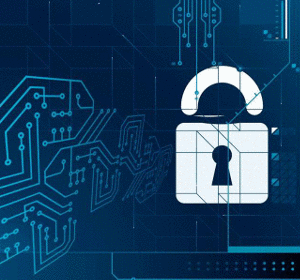Best Practices for Enterprise IT Security
To boost brand image and increase productivity, more and more enterprise sectors are exploiting avenues such as cloud technology, social media platforms, and bring your own device (BYOD) to name a few. And when such is the scenario, ignoring the importance of IT security can spell disaster. Here, we have outlined a list of practices every enterprise must follow to secure their information technology.
Know your Environment
Before putting your best foot forward in securing your enterprise IT, verse yourself with your network environment. A close up of your infrastructure will help you sieve your assets, their security issues, and gauge at the reliability of your security program. A crucial part of this exercise is to determine whether you have the right support to run the security program in the first place. That should be followed by setting up a process to track down security vulnerabilities, as an ongoing task. Assessing your network environment will enable you to come up with a set of security policies, which would help you control the use of your enterprise’s technology and resources.
Data Encryption
Data encryption might be a no-brainer, yet it is startling to know that most IT enterprises do not encrypt their data accessed over cloud. Encrypt your data no matter where it is stored or accessed from. Even one single instance of data breach can hit your business hard, and may damage your brand name, operations, and financial foothold.
Secure your Email
Email remains one of the most commonly used tunnels by hackers, to break into a corporate network. Volumes of files including documents, and images are sent and received via email every day. One weak component in the email traffic can be exploited by a hacker to gain unauthorized access. Take measures such as employing email filters, careful screening of inbound and outbound emails, and screening of emails for malware. Doing this may significantly cut down the risk of any hacker exploiting the email platform to breach your network.
Consider End Point Security of Paramount Importance
You cannot build a security perimeter for your enterprise, by only using the bricks and mortar of antivirus software. Your approach here should be deploying a multilayered protection which should include intelligent firewall, Intrusion Detection System (IDS), Intrusion Prevention System (IPS), complete web security, and application and device control. And all these features together define a reliable and robust End Point Security Solution.
Follow the Policy of Least Privilege
One of the major threats to enterprise security is the leniency given to system administrators to access data. Set up a policy that disallows any one to log into a computer with admin rights, unless they follow a certain protocol. Being logged in with admin rights, and visiting a malware-infected site can cause irreparable damage to the entire corporate network.
Reinforce the Human Element
The human element still remains the weakest link in IT security. Complete protection against cyber threats can only be achieved by user awareness. Educate your staff about cyber-attacks, and how they can take steps to avoid them. An employee who is uninformed about cyber security can foil your strategy to keep your network safe. On the other hand, an informed user will be more cautious while working with the company’s digital assets. A quarterly Internet Security training program may go a long way into reinforcing the entire paradigm of your enterprise security. The training may include the following pointers:
- Exercising caution against unfamiliar software, unfamiliar websites, and unknown email attachments
- Importance of logging off from or locking computers when not in use
- Restricting remote access
- Frequently backing up data
- Treating sensitive data with extra caution
- Not sharing passwords
- Not forwarding hoaxes or chain mail
Malwares keep on evolving and their attacks increase exponentially every year. Despite this, most small and medium enterprises still have a laid-back attitude about their IT security. It’s time they understood the fact that cyber criminals do not label their target organizations as big or small, but simply as yet another fish waiting to fall into their net.



2 Comments
Really gr8 and very use full info Rajib sir,
Thanks and Regards,
Hrushi Sonar.
Thanks a lot.